ATC SCM40A Active Loudspeaker
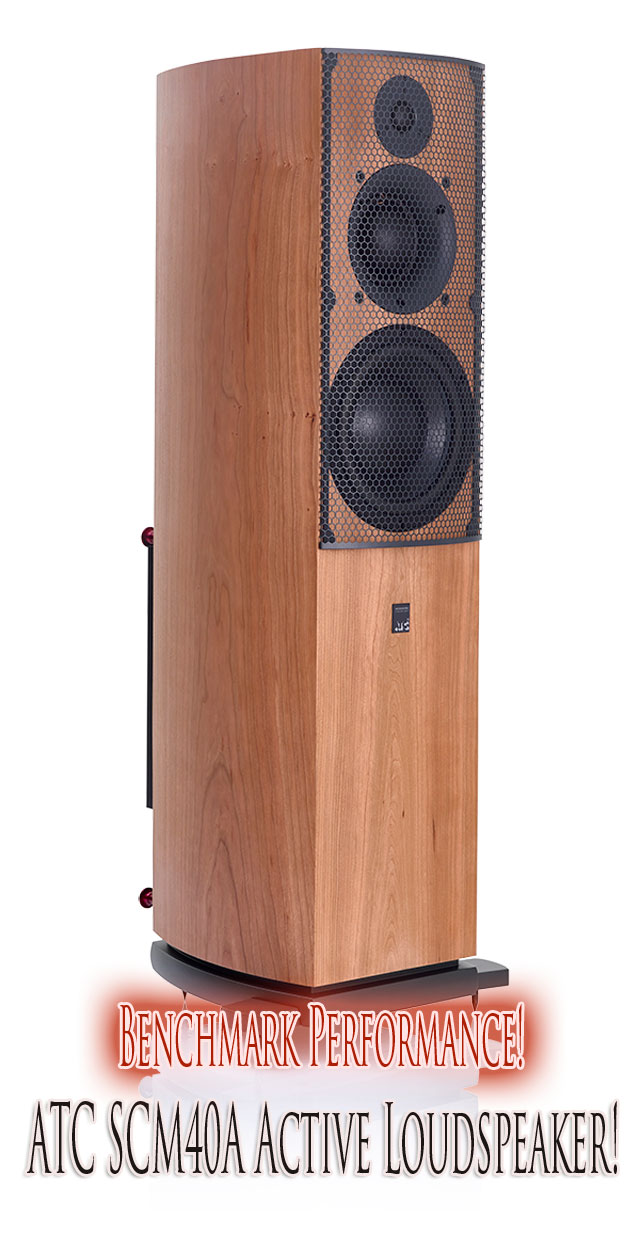
 A state of the art speaker should be an active system (I should have said ’I believe’ but that would not have expressed how strongly I feel). To be clear let me explain what an active system is. An active, multi-way speaker has no passive crossover in the speaker. Each bandwidth division has its own amplifier and that is bandwidth limited by an electronic filter, BEFORE the amplifier, that tailors the response of each driver like way a conventional crossover would. Active speakers are common in professional monitors but only a few manufacturers (ATC, PMC etc.) make them for the home enthusiast.
A state of the art speaker should be an active system (I should have said ’I believe’ but that would not have expressed how strongly I feel). To be clear let me explain what an active system is. An active, multi-way speaker has no passive crossover in the speaker. Each bandwidth division has its own amplifier and that is bandwidth limited by an electronic filter, BEFORE the amplifier, that tailors the response of each driver like way a conventional crossover would. Active speakers are common in professional monitors but only a few manufacturers (ATC, PMC etc.) make them for the home enthusiast.
The ATC SCM40A is an active speaker. It’s made in Great Britain and the American importer is Lone Mountain Audio in Las Vegas. It’s a relatively small 3 way floor standing speaker (roughly 38½” high by 10½” wide by 13½” deep) and heavy enough, at about 80 pounds, that for safety reasons two people should handle. Driver complement is an 8” paper cone woofer (ATC says 6½”, more on that later), a 3” soft dome mid-range (a rare creature indeed) and a 1” soft dome tweeter. Unusually all the drivers are made by ATC and all feature special design characteristics for superior reproduction. The three power amps are ATC products and are rich class A/B push/pull with MOSFET outputs making 150 watts for the woofer, 60 watts for the mid-range and 32 watts for the tweeter. Crossovers are 4th order Linkwitz/Reilly at 380 Hz and 3.5 kHz incorporating phase compensation. And there is FET overload protection for those who like to risk hearing loss without regard for the drivers’ survival.
ATC specs are engineering specs, not advertising specs. The speaker is rated from 48 Hz to 22 kHz with a – 6 dB point at 48 Hz. No advertiser would quote a spec like that. It isn’t the kind of hype that sells loudspeakers. Most manufacturers would simply say something like it goes to say 30 Hz and skip how far down the roll off was. It isn’t a lie but it tells us little useful. Also recall I mentioned ATC calls this a 6½” woofer. Almost everyone else would call it an 8” woofer because the convention is to measure the frame size. ATC measures the diameter of the cone, the real size of the driver. You can trust people who give you facts, not hype.
ATC, unlike the majority of manufacturers, makes all their drivers. And all their employ underhung voice coils where the voice coil is shorter than the length of the magnetic gap. This is common in tweeters but quite rare in other drivers. It costs more and is a little less efficient but gives more accurate reproduction because the voice coil remains in the ‘focused’ part of the gap, where the magnetic lines of force are more linear even at high drive levels and/or at very low frequencies (the lines of force are less linear at the edges of the voice coil). This doesn’t mean that over-hung is lousy. But if maximum fidelity is the goal underhung is the superior choice.
The ATC SCM40A is a closed box design. That’s fairly unusual in this era of ported speakers. As an older audiophile I recall the days of Acoustic research and KLH when the reverse was true. But the advent of the Thiele/Small research has changed things. Bass reflex goes lower before rolling off and gives about 3 dB more efficiency. But a closed box rolls off much slower giving cleaner decay response (this doesn’t mean that well designed bass reflex decay is bad only that closed box is better both theoretically and audibly). I tend to prefer closed box designs.
The QTC: (resonant frequency of a loudspeaker in free air), the bass damping of this speaker, is 0.5 which is critically damped, meaning minimal over hang in the bass.
Note: Qtc is the in cabinet (system) Q factor. Qts is the free air (driver) Q factor. This corresponds with the -6 dB quoted by ATC which is where the math says it should be. Critically damped closed boxes are 3 dB down at 1.55 x box resonance. I initially feared that with a 48 Hz -6 dB point and Qtc = 0.5 that the bass would be tight but a bit thin. That proved to be wrong.
Note: the speaker design formula all relate to -3 dB points rather than 6 dB points.
ATC mentioned another advantage to a system with a LF response that is critically damped and, that was a eureka moment for me. When a speaker is driven hard, the voice coil heats up. This increases the resistance of the voice coil giving deteriorating bass damping. So at high levels bass overhang gets worse. But if you begin with very tight bass this high level affect is minimized. BSL: this is true for vented designs as well.
The star driver in the SCM 40A is the mid-range driver. It’s a 3″ soft dome. How many 3″ domes can you think of (you only need three fingers!)? Yet this driver is over 3 decades old. It was one of the first drivers ATC developed and suggests the company places great value on the all important mid-range. Like all ATC drivers, the voice coil is under hung for superior reproduction accuracy. It’s mildly horn loaded for efficiency and control of lower frequency dispersion. This driver belongs in a transparent enclosure. It’s that impressive to see with its massive magnet structure.
A rare feature of ATC domes, both mid ranges and tweeters is the use of two spiders (it may be better to call them suspensions in the case of the mid and tweeter). All drivers use a spider (with one or two exceptions). It’s the corrugated ring around the voice coil that locates the driver horizontally and is the main source of the restoring force(spring) that returns a driver to its neutral position. To keep a driver only moving in and out (pistonically) you need a second support so it doesn’t wobble or rock around its central axis. Wobble is obviously bad. It’s an unintended motion and therefore a distortion. And it also forces a wider magnetic gap so the voice coil doesn’t rub. A larger gap reduces magnetic power with the knock-on effect of reducing efficiency and high frequency extension. A cone driver has a second support at the cone’s surround. The small surround of a dome driver doesn’t work as well. The ATC solution is a second spider providing a second, secure support.
I’ve often read arguments in favor of 2-way speakers over 3-way speakers. The theory is that it’s hard enough to design a single good crossover. In a 3-way speaker the second crossover makes the design more than twice as difficult. But when it’s done well (and good designers can do it) I think it’s obvious that a 3-way is superior. Each driver is stressed less. And the changes in dispersion from driver to driver are smaller since you’re not going from a very large woofer to a small tweeter. The ATC 3-ways are a great testament to this. The performance upgrade from the 2-way ATC SCM 19 to the SCM 40A, in the midrange, was quite clear.
The SCM40A enclosure is probably the least special aspect of its design. It’s a classic beautifully veneered ¾ inch MDF box with flat front and rear faces and the currently popular curved sides. It sits on a black base with four, adjustable pointed feet. I find its proportions especially appealing and I’m guessing that since it doesn’t visually dominate a room, it should have a good Wife Acceptance Factor for an audio product.
But what makes the SCM 40A most special is its active configuration. Each speaker has a 3-channel amp and active crossover bolted on the back of its enclosure. The active crossovers are 4th order critically damped (I believe this means Linkwitz/Riley) at 380 Hz and 3.5 kHz. Here is one of the advantages of the 3″ dome midrange. It has wide enough dispersion to make a transition to a 1″ tweeter at a higher than usual frequency. Most tweeters come in around 2 to 2.5 kHz. A higher crossover would easier to hear on a larger mid driver. The midrange dome is still efficient and robust enough to allow a reasonably low, 380 Hz crossover to the woofer and small enough for the higher crossover. And the ear is very sensitive in the octave around 2 kHz so moving the crossover higher is a positive. Plus the higher crossover reduces the tweeter load for cleaner sound.
Fourth order Linkwitz/Reilly crossovers about are very popular today. Fourth order roll off is steep enough to hide response problems at a driver’s frequency extremes. In contrast to other 4th order configurations popular in earlier times the LR 4th order design sums to flat at the crossover point.. Plus the LR 4th order crossover is critically damped (Q = 0.5), yielding minimal ringing for a 4th order crossover.
Why go to the complication of an active system? After all in a 3 way speaker like the SCM40A that means 6 amplifiers instead of just two. I see two main advantages. First of all each amplifier does not need to handle the entire audio spectrum. So each amp has an easier job to do covering less band width. BSL: with the benefit of reducing intermodulation distortion).
But more importantly it eliminates the passive crossover as a load for each amplifier, reducing the load to just the voice coil of each driver, not the complex combination of coils and capacitors and resistors of a passive crossover. A driver and its crossover presents a lousy interface for an amplifier. When amplifiers are tested to get their specs the test load is a large resistor, a relatively benign load. Even cheap amplifiers laugh at a resistor. But with a speaker/crossover we no longer a have a simple resistive load. A reactive load makes many amplifiers unhappy. We all know of speakers that have reputations as difficult loads. Reducing the load to a single voice coil makes the amplifier’s job way simpler.
Let me take two short side trips to further illustrate this. There’s a small group of audiophiles who advocate full-range (single driver) speakers. Full-range speakers have both pluses and minuses (like every real world product). But they have an integrity about them usually attributed to the lack of a crossover. I’ll concede the value of no crossover but I’d argue that the direct coupling of an amp to a driver with no passive crossover, as in an active system, can also lay claim to their positive values.
It’s interesting that many of the mega amps, the ones that cost a gazillion dollars often get rave reviews and their specifications don’t appear any more special than normal, good amps. Recall my comments on problems of driving a passive crossover. I would suggest that the big difference, performance wise, in these super amps comes from being able to use more output devices and especially to better, larger, power supplies. The power supply actually is the amp. The current from the power supply is what drives the speaker. What we normally think of as the amplifier is a circuit simply used to modulate the energy in the power supply. With an easy load, a good, less costly amp can approach the performance of a super amp. But if the load is very complex as it often is, that’s when the ‘super’ amp shows its mettle. An active system gets better sound out of a good amp than a passive speaker since the amplifier load is always more benign..
With all due respect, I think you may have slightly misunderstood some concepts here. Moving coil drivers are complex and can be difficult loads without the addition of a passive crossover. They are inductive and not only that, their electrical characteristics vary with drive level. The addition of a passive crossover does not have to make for a very difficult and demanding load. The problem is usually the addition of a poorly engineered crossover in combination with an average set of drive units (with dynamically varying electrical characteristics) that makes difficult demands of amplifiers.
This neatly leads on to an interesting question: why do companies engineer multi-way driver-crossover systems that present such a challenging load to an amp?
Well, a difficulty with a passive crossovers is that the acoustic frequency and phase response and the impedance are all linked by the crossover component values chosen. Change a component to modify the frequency response and we see a corresponding change in the phase and impedance. Change a component to modify the phase and the frequency and impedance response also changes. This can make it is very, very hard to come up with a passive crossover design that offers optimal performance in all areas – and we haven’t even factored in build cost, physical space and standard component values!! Something has to give and it’s often the electrical impedance presented to the amplifier that is most heavily compromised.
We can summarize the benefits of active as follows (although your view and interpretation may obviously be a little different):
· – Perfectly matched dedicated amplifier for each frequency band.
· – Active crossover filters featuring phase correction ensure phase coherency through the crossover region for improved imaging and tonal accuracy (not possible in a passive filter).
· – Crossover filter response that is not effected by a drive units dynamically varying impedance (passive filters response changes with drive level (voice coil temperature).
· – 20 dB improvement in amp intermodulation distortion due to amp limited bandwidth.
· – Better controlled low frequency response due to elimination of bass series inductors and minimal speaker cable which, adds series resistance and reduces the damping factor.
· – Greater dynamic range due to minimizing bass series resistance and also dedicated mid and HF amps not being ‘loaded’ with the large demands of low frequency reproduction.
Please don’t get the wrong idea. This doesn’t mean that ATC amps aren’t very good amps. I’ve never had a chance to audition an ATC amp. But I’ve read numerous reviews and they are uniformly excellent reports. While there is no substitute for listening, consistency in reviews is an excellent indicator of excellent performance.
As usual in my room I set the ATC speakers about seven feet from the back wall with the left speaker about five feet from the side wall and the right speaker about two feet from the other side wall. The speakers were about three feet apart which is close but I sit very close, about 5 ½ feet away. This positioning is partly a result of my furniture and room layout but it’s also because I prefer near field listening. It turns out that every conventional speaker I’ve used in this layout has fared extremely well. I’ve never tried planars or omnis in my room and have even turned down reviews of such speakers because I didn’t believe they would exhibit their best in my environment. Anyway lots of space and irregular distances from walls almost always results in fine performance
My electronics, which include a VPI ‘table (HW-19 mk4), with a Fidelity Research arm and Technics EPC 100 pickup plus a Pioneer DV-563A and GeorgeMark Audio First Overture DAC. All are located in another room so I use long interconnects. My reference system uses 25 foot long unbalanced cables. The ATC powered speakers only accept balanced XLR connectors. At first I tried them with my regular cables and XLR adapters. The results were fine. But I wanted to try a balanced set up. Fortunately one of my audio club cohorts had a 25 foot set of balanced Mogami cables a standard in recording studios. I borrowed them and in addition to the expected quieter background the sound was obviously improved, clearer and more transparent. So I left the Mogamis in for the rest of my auditioning. If a preamp supports XLR interconnects I highly recommend balanced interconnects over conventional RCAs.
A few comments on my tastes in audio reproduction to make my comments more meaningful. Of primary importance to me is dynamic linearity a term I first heard over four decades ago from Bud Fried of IMF and Fried speaker fame. It took me a long time to fully understand what Bud meant. It isn’t simply the ability to play loud. It’s the ability to follow level changes in the software accurately whether the change is very large, very small or anything in between. I believe it’s what makes reproduction sound ‘real’ on a good recording . And it’s what makes the out of room test work. When you’re outside of a room with live music you know it’s live. And you can tell it’s a good system listening out of the room. I believe that’s because of dynamic linearity.
My other primary biggies are detail, detail, detail, and tight bass with very clean overhang, the lack of extra resonance from the system. I believe all these principals are closely related. I suspect If you have one you probably have the others. Clarity and information and dynamics are hidden by resonance.
All the other classic terms to describe sound to me are essential albeit secondary factors for me. Octave to octave balance and imaging etc. are important to accurate reproduction but secondary to a sense of being ‘real’ for me. I recall Gordon Holt’s review of the KLH 12. He found it slightly colored. Henry Kloss disagreed. And after changing his seat in the Philadelphia Academy of Music Gordon changed his assessment. The new seat sounded just like the KLH 12. Both seats were real sound obviously. But many minor frequency variations don’t make sound seem artificial.
I have three basic ‘test’ CDs I always start with that nearly always tell me how a device reproduces my primary (and secondary) sonic values. In order of my usual use they are The Pentangle (Castle 06076 81120-2), Evgeny Kissin, piano Pictures at an Exhibition (RCA BG2 63884) and John Rutter, Requiem (Reference Recordings RR-57D). The first two almost always tell me what I need to know about a loudspeaker, especially my primary virtues but also the secondary ones. The Rutter Requiem adds a full orchestra with its complexities of multiple sonic sources and their interaction and is marvelous for portraying spatial characteristics.
I think it’s obvious that I’m both an objectivist and subjectivist. Good sound measures well and vice versa. But unfortunately I don’t have the means to do any measurements myself and so my reviews are listening reviews (I don’t like to call them subjective; neither did HP). But this time I was fortunate to have a friend do a near field, in room, on axis frequency response curve for the SCM 40A. And the results were very good. The response was flat with only a 7 to 8 dB lift around 40 Hz, obviously a room affect. The response was then back to the reference level around 30 Hz. And the rest of the response up to 20 kHz was a slightly slopping, flat line(with tiny wiggles, of course) down a couple of dB at 20 kHz. This is almost ideal for a conventional speaker. Room eigentones are unavoidable in the bass. And due to the intensification of the power response into a narrower angle as frequency rises, a totally flat on axis response will sound bright.
On to listening. And as usual I began with The Pentangle. And as usual I especially concentrate on decay affects everywhere but especially in the mid bass. And all was well, very well. The guitar strikes rang clearly and died away cleanly with the changing chromatic affects evident throughout the decay. The cymbals rang clearly and the decay was complex and clean. The bowed, acoustic bass had a gutty, woody tone which only occurs with good decay control. Otherwise the tones are much simpler almost without a chromatic sense. Very importantly the drum strikes were produced so well you could picture the skin of the drum returning to a neutral position if you closed your eyes. That’s getting the mid bass accurately, the area where most speakers are at best OK but often sloppy. The closed box design with low Qtc is working just the way the books say it should. This is solid A performance. The cymbals and guitars were exciting showing me that the mini dynamics and macro dynamics demanded from a top class speaker were present. This was further confirmed by the texture of Jacqui McShee’s voice and the acoustical bass. The texture comes from subtle dynamic variations. If these sources are too smooth or hidden by ringing there are subtle smearing faults. And all the standard factors we look for were also there on the SCM 40A, transparency, detail, imaging, smooth high end.
Turning to the Kissin Pictures things were also fine. Again the decay is important to me. The piano strikes were quick and hard not damped and muted. The decay was clean and detailed, tough on a powerful instrument like a piano. There are tremendous momentary peaks when a key is struck hard. You want to sense a powerful, big instrument that starts and stops rapidly and you do with the ATCs. It’s almost a real piano. That may sound like faint praise but if you know the sound of a real piano up close you know its power. Capturing this totally accurately may just be impossible given the state of the recording and reproducing art. So this really is quite a complement, especially for a small floor stander. It would take a much larger speaker to do much better.
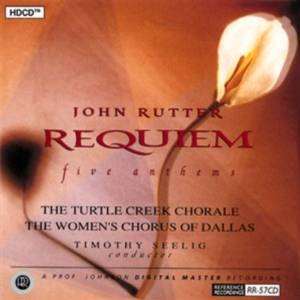 But these were small scale discs. And you must listen to large scale, preferably acoustic, sources to confirm these results. The Rutter Requiem is an excellent tool here. All was well. On Requiem the ATC speakers produced a large 3D space with side walls beyond my room, height above my ceiling and depth beyond my back wall into the lawn outside. The individual elements were not just well positioned 2D card board figures but 3D forms that portrayed a sense of mass. On a good recording like this you get a real acoustic vision, not a combination of flat figures in a 3D volume analogous to the old ViewMaster 3D devices many of us oldies recall from our youths.
But these were small scale discs. And you must listen to large scale, preferably acoustic, sources to confirm these results. The Rutter Requiem is an excellent tool here. All was well. On Requiem the ATC speakers produced a large 3D space with side walls beyond my room, height above my ceiling and depth beyond my back wall into the lawn outside. The individual elements were not just well positioned 2D card board figures but 3D forms that portrayed a sense of mass. On a good recording like this you get a real acoustic vision, not a combination of flat figures in a 3D volume analogous to the old ViewMaster 3D devices many of us oldies recall from our youths.
Needless to say my listening didn’t stop at this point. It went on for weeks both to confirm the results and for pure pleasure.
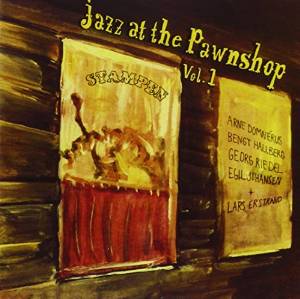 Not surprisingly the SCM40A speakers can sound almost real on good live recordings. I could close my eyes listening to that old audio war horse Jazz at the Pawnshop (Proprius PRCD 7778) and make believe I was in a smoky jazz club. The expanded 2 CD Live at Blues Alley Eva Cassidy recording, Nightbird (Blix Street G2-10109) was a similar experience. Good speakers often seem to be at their best on live recordings so the laws of sound must be real. I surmise an accurate reproducer is especially kind to the real thing. It would surely be ethical if it were.
Not surprisingly the SCM40A speakers can sound almost real on good live recordings. I could close my eyes listening to that old audio war horse Jazz at the Pawnshop (Proprius PRCD 7778) and make believe I was in a smoky jazz club. The expanded 2 CD Live at Blues Alley Eva Cassidy recording, Nightbird (Blix Street G2-10109) was a similar experience. Good speakers often seem to be at their best on live recordings so the laws of sound must be real. I surmise an accurate reproducer is especially kind to the real thing. It would surely be ethical if it were.
One of my all time favorite pieces is a dulcimer concerto, Blueberry Winter by Conni Ellisor, the last piece on the Conversations in Silence CD (Warner Bros 46739-2). Talk about a piece of classical Americana, a dulcimer concerto! Even on good recordings the dulcimer on this CD can sound a bit obscure at times when the full orchestra is playing along. It never sounded clearer than on the SCM 40A.
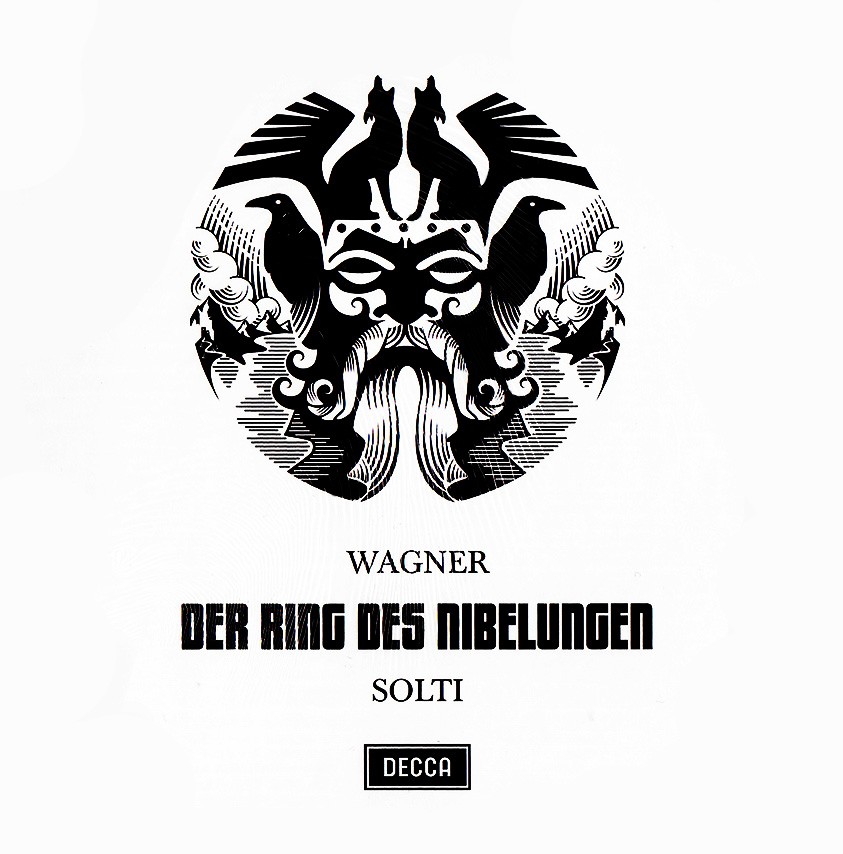 I had to throw on the latest rerelease of the Solti Vienna Orchestra of Der Ring des Nibelungen (Decca 478 8370), considered by many the greatest classical recording of 20th century (I can hear my late friend Bud Fried yelling yes, yes, yes loudly from the grave; it was his all-time favorite performance and recording). It’s a wonderful performance and a superb recording especially given its genesis in the 1960s. Great opera is a real chore for a system. It is such large scale with multiple instrumental sources and powerful voices playing together. I wasn’t quite in Vienna(I doubt any system could accomplish that) but the low coloration, super dynamics, marvelous spatial presentation and wonderful transients got surprisingly close to what I’ve heard at the Met.
I had to throw on the latest rerelease of the Solti Vienna Orchestra of Der Ring des Nibelungen (Decca 478 8370), considered by many the greatest classical recording of 20th century (I can hear my late friend Bud Fried yelling yes, yes, yes loudly from the grave; it was his all-time favorite performance and recording). It’s a wonderful performance and a superb recording especially given its genesis in the 1960s. Great opera is a real chore for a system. It is such large scale with multiple instrumental sources and powerful voices playing together. I wasn’t quite in Vienna(I doubt any system could accomplish that) but the low coloration, super dynamics, marvelous spatial presentation and wonderful transients got surprisingly close to what I’ve heard at the Met.
Harmonic coloration was very low. Octave to octave coloration is best analyzed playing multiple sources. Citing individual examples is important primarily to point out a bad coloration. For me low coloration is simply the lack of tones that stick out and sound canned rather than real. Small changes such as occur when changing seats in concert hall(as mentioned earlier) are not important for me. It still sounds like the real thing.
On all the recordings I played the crossover points were invisible. I attribute this largely to the use of the ATC 3″ dome mid-range driver. It’s mainly sudden changes in dispersion that make crossover points noticeable. But with the small diameter of the dome the dispersion is extremely wide at the bass crossover, easily 180 degrees. And even at the relatively high tweeter crossover (3500 Hz in an era where 2 kHz is more common albeit with larger diameter mid-range drivers) the dispersion before significant roll off is still on the order of 90 degrees.
Obviously I loved this speaker. What more could one want? Well I would like a few more dBs of loudness and another half octave of bass, both extremely unfair to expect from a speaker of this size. Add to that the excellent performance the simple visual design that fits as well as any high performance speaker can into a room. Plus it’s really a very good buy too for such high performance when you consider the amplifiers are included.
Well does this prove my belief that active is the way to go. Not scientifically. There’s too poor control of variables here. But the excellent performance leaves the door to the proof wide open. And given the SCM 40A performance and my 50 years of pursuing of audio nirvana, my gut still is convinced active is the ultimate way to go .
Adding everything together and how easily the ATC SCM40A can be used to produce a simple, elegant, high performance system this is a heck of a speaker system. And if you want a speaker system that allows great live recordings to make you think the performance is real, this is a must audition. Add a preamp and a source or two and you have a simple high performance system. The last speakers the great Gordon Holt bought for his own use were a set of ATC SCM50A active speakers because ATC speakers were among the few that made great recordings sound real. That’s enough of a recommendation for me. Simplicity and performance and relative economy gives the ATC SCM40A a very, solid 2016 Most Wanted Component nomination and highly recommended!

allen edelstein
Specifications:
Price: $12,999
Drivers: HF ATC 25mm dual suspension Tweeter, Mid 75mm ATC Soft Dome, LF ATC 164mm SC
Matched Response: ±0.5dB
Frequency Response (-6dB): 48Hz-22kHz
Dispersion: ±80° Coherent Horizontal, ±10° Coherent Vertical
Max SPL: 112dB
Crossover Frequencies: 380Hz & 3.5kHz
Connectors: Male XLR
Input sensitivity : 1V
Filters : 4th Order critically damped with phase compensation.
Overload Protection : Active FET momentary gain reduction.
Fault Protection : DC fault protection and thermal trip. Fault indication on rear panel mounted LED.
Amplifier Output: 150W LF, 60W MF, 32W HF
Cabinet Dimensions (HxWxD): 980 x 370 x 344mm (inc. foot plinth & amp, spikes add 25mm to height, grill adds 34mm to depth)
Weight: 36kg
Website: http://atcloudspeakers.co.uk/professional/
USA Importer: http://www.lonemountainaudio.com
Stereo Times Masthead
Publisher/Founder
Clement Perry
Editor
Dave Thomas
Senior Editors
Frank Alles, Mike Girardi, Russell Lichter, Terry London, Moreno Mitchell, Paul Szabady, Bill Wells, Mike Wright, and Stephen Yan,
Current Contributors
David Abramson, Tim Barrall, Dave Allison, Ron Cook, Lewis Dardick, John Hoffman, Dan Secula, Don Shaulis, Greg Simmons, Eric Teh, Greg Voth, Richard Willie, Ed Van Winkle, Rob Dockery, Richard Doran, and Daveed Turek
Site Management Clement Perry
Ad Designer: Martin Perry


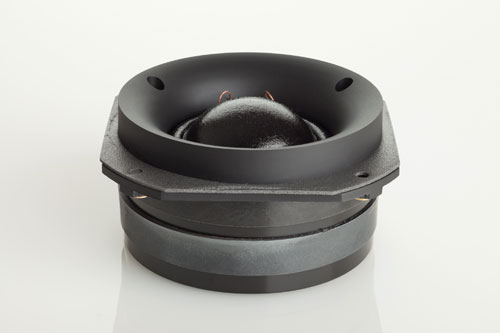
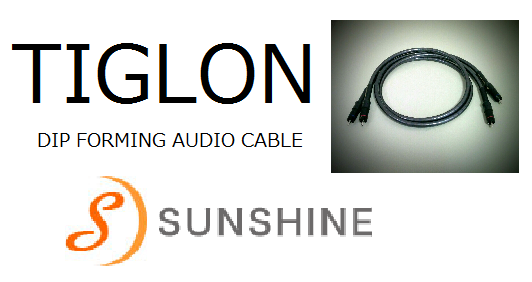
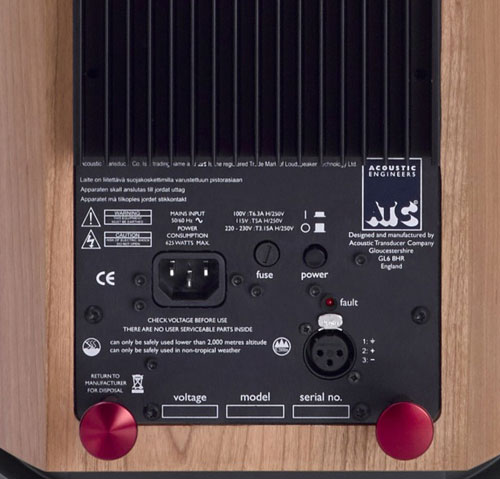

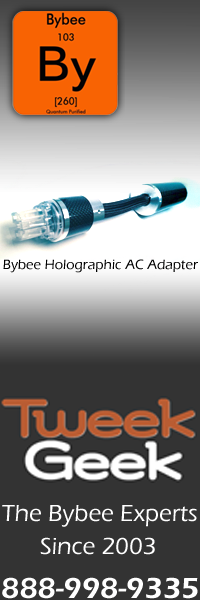


Be the first to comment on: ATC SCM40A Active Loudspeaker